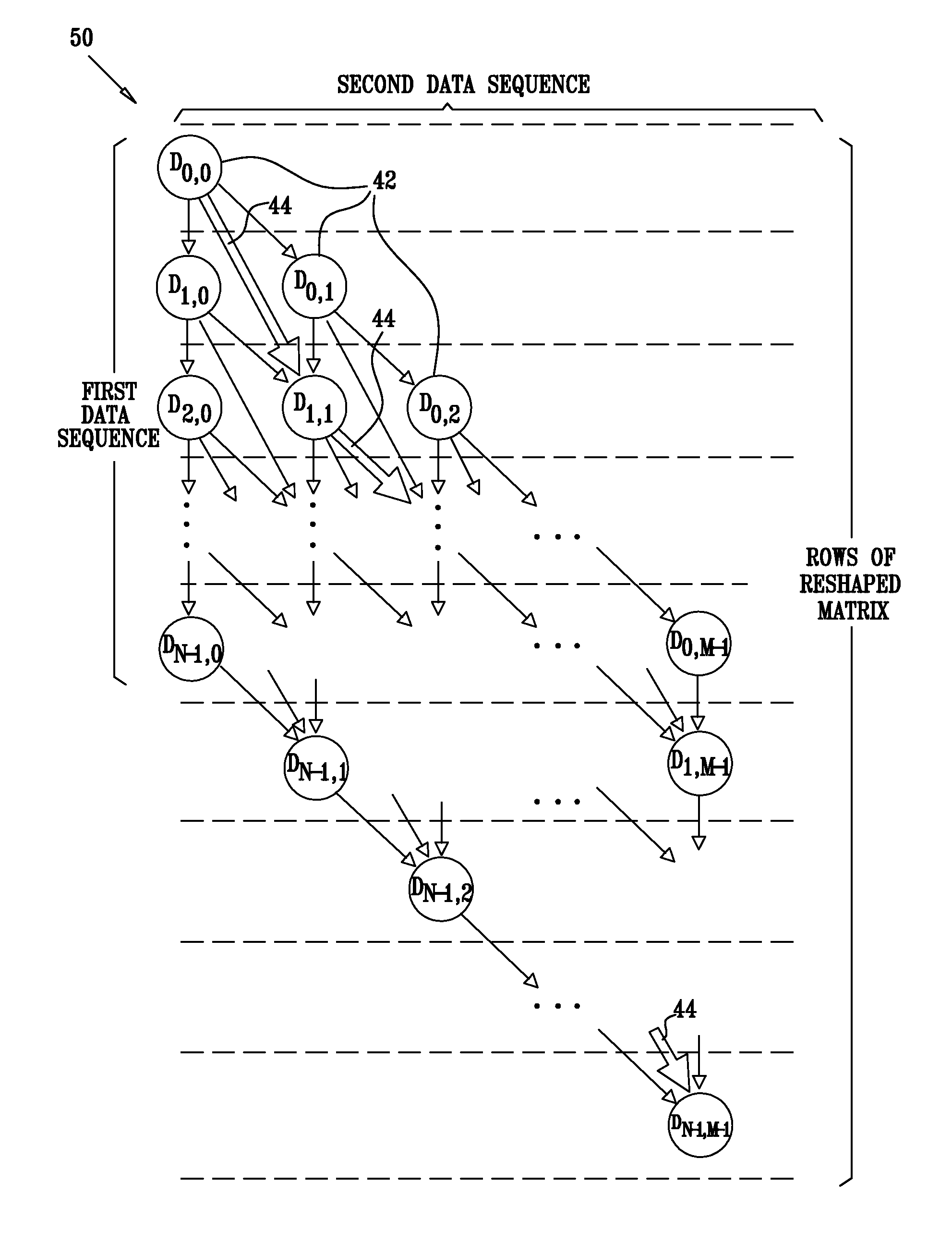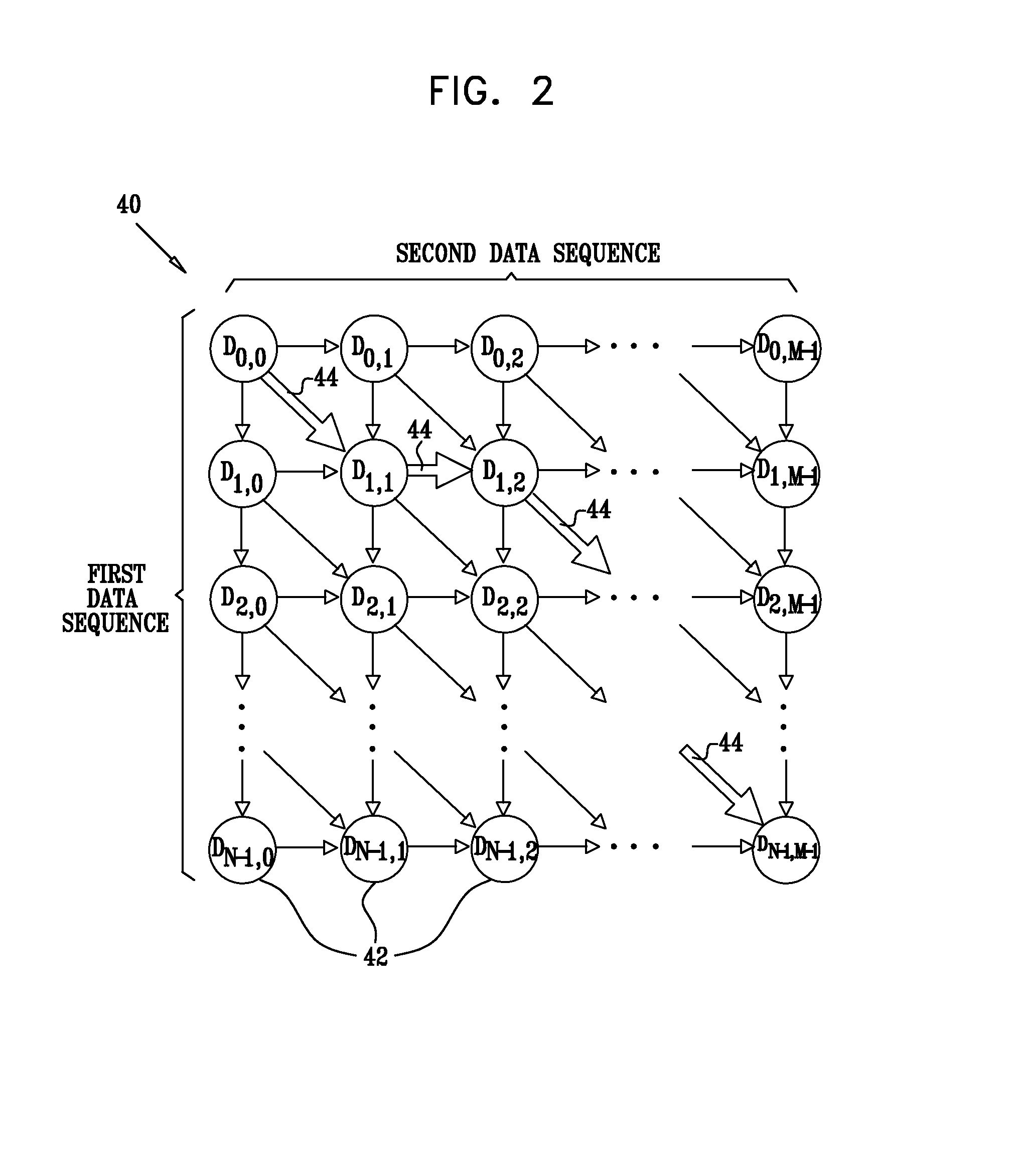Vectorization of dynamic-time-warping computation using data reshaping
a dynamic time-warping and data reshaping technology, applied in the field of data sequence alignment, can solve problems such as the difficulty of vectorizing the alignment process, and achieve the effect of removing the dependence on reverse-diagonal data
- Summary
- Abstract
- Description
- Claims
- Application Information
AI Technical Summary
Benefits of technology
Problems solved by technology
Method used
Image
Examples
implementation example
Matlab Implementation Example
[0065]The following program code demonstrates a vectorized implementation of the disclosed method using the Matlab environment described above. Using this Matlab code, the inventors achieved a reduction of computation time by a factor of 20-25 in comparison to conventional, scalar DTW computation.
%------------------- vec_dtw.m ---------------------------function trace = vec_dtw(a,b)UP = 2; LEFT = 3; LEFTUP = 1;n = length(a); % assume m > n, otherwise swap between % a and b prior to function callm = length(b);[A,B] = meshgrid(b,a);d_mat = dist_matrix(A,B); %calculates Di,j;trace_ind = zeros(n, m);D = zeros(size(d_mat));D(:,1) = cumsum(d_mat(:,1)); % calculate the first % column of CUMDD(1,:) = cumsum(d_mat(1,:)); % calculate the first row of CUMDD(2:n,2:m) = d_mat(2:n,2:m); % Di,jCUMD = shift(D,Inf); % perform column-wise shift transformtrace_ind(2:n,1) = UP;trace_ind(1,2:m) = LEFT;trace_ind_new = shift(trace_ind,−1);from = zeros(n+m−...
PUM
 Login to View More
Login to View More Abstract
Description
Claims
Application Information
 Login to View More
Login to View More - R&D
- Intellectual Property
- Life Sciences
- Materials
- Tech Scout
- Unparalleled Data Quality
- Higher Quality Content
- 60% Fewer Hallucinations
Browse by: Latest US Patents, China's latest patents, Technical Efficacy Thesaurus, Application Domain, Technology Topic, Popular Technical Reports.
© 2025 PatSnap. All rights reserved.Legal|Privacy policy|Modern Slavery Act Transparency Statement|Sitemap|About US| Contact US: help@patsnap.com



